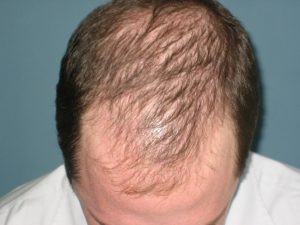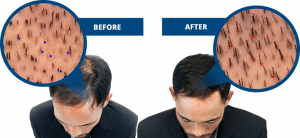syphilis hair loss
Secondary Syphilis Causing Hair Loss
If you first get syphilis and don’t treat it, it will attack again with completely different symptoms, called secondary syphilis. Syphilis is a disease caused by spiral bacteria. The disease is spread through direct contact with a person who has a chancre (an ulcer caused by syphilis).
Because these chancres usually occur on the genitals, they are sexually transmitted diseases.
However, chancres can also occur in the mouth and lips. In the first stage, syphilis does not cause hair loss except where the hair has a chancre. When the disease progresses to the next stage, it causes hair loss. Let’s look at secondary syphilis, which causes hair loss.
In the secondary stage, syphilis is characterized by skin rashes and mucosal lesions. These rashes can penetrate the scalp and cause inflammation of the hair follicles.
This can affect the hair follicles and cause itching, so you can scratch your hair directly. The rash can also damage the hair follicles and impair the integrity of the hair, leading to hair loss. The hair loss associated with syphilis is in the form of patches and has no clear features. The lesions of this secondary infection contain bacteria that other people can infect if they come in contact with the lesion. Secondary syphilis must be treated as soon as it is recognized as a secondary symptom, and if left untreated, syphilis can continue to progress and can lead to death, the result of which can be fatal.
The moment you realize you have syphilis, you should see your doctor right away and prescribe a medication to help kill this deadly bacterial disease. Treatment of syphilis involves the use of certain antibiotics. Once the disease is treated, it is likely that the damaged hair follicles will regenerate and the hair area will begin to show signs of hair growth. If the hair follicles are severely damaged, they may be treated so that they can continue to produce hair and remove hair fragments.
Common treatments for hair loss due to syphilis include medications such as finasteride and minoxidil.
These two drugs were effective for FDA approved and were the most inert hairs to return to the hair production cycle. The good part using this drug is in the form of current cream and capsules, so you do not have a surgical procedure when you feel about hair loss with these drugs. It is not possible to diagnose the loss of adjuvant syphilis, hair loss loss. In other words, if the reasons for hair loss is correctly diagnosed, some skin skin flakes are collected and tested bacterial activity.
Causes of Hair Loss
The main medical conditions that cause or contribute to hair loss include:
Diabetes includes a group of metabolic (chemical reactions that occur at the cellular level) disorders. The patient had elevated blood sugar levels. This condition occurs because the body does not produce enough insulin (a hormone produced by the pancreas) or because cells do not respond to the insulin the body produces. Typical symptoms include frequent urination, increased thirst, and increased hunger.
Lupus erythematosus is a cluster of autoimmune diseases. A common feature of lupus is an overactive immune system that cannot differentiate viruses, bacteria, and other antigens from healthy tissue. As a result, the immune system begins to attack normal, healthy tissue. The disease affects a variety of body systems, including joints, skin, kidneys, blood cells, heart, and lungs.
Hyperthyroidism is actually a condition called hyperthyroidism.
The glands produce and release large amounts of the thyroid hormones triiodothyronine and thyroxine. An alternative condition is hypothyroidism (or hypothyroidism).
Hypervitaminosis A is a condition in which there is an excess of vitamin A, particularly retinoids, in the body. Retinoids support many important functions, including vision, bone growth, immune function, and activation of tumor suppressor genes. The main route of transmission for
syphilis is sexual contact (it can be transmitted from mother to fetus during pregnancy or childbirth).
There are 4 stages of this STD. Secondary syphilis is identified as a rash on the palms and soles of the feet.
Ringworm of the head (also called ringworm) is a fungal infection of the surface of the scalp. The main cause of the disease is the invasion of fungus into the hair shaft. Symptoms are presented as single or multiple foci of hair loss. Often bald patches include a black dot pattern. Hair loss is accompanied by inflammation, flaking, pustules, and itching. Patients are usually children before puberty and there are more boys than girls.

Harmful Lifestyles That Can Contribute to Hair Loss
Scalp Disorder Osteopathic alopecia is characterized by thinning or hair loss. This is caused by the premature entry of hair into the telogen phase of growth. Conditions such as eating disorders, fever, childbirth, chronic illness, major surgery, anemia, severe emotional distress, strict diets, and medication can cause telogen outflow.
Iron is present in every cell of the human body. It plays several important roles in human body functions, including transporting oxygen from the lungs to tissues, promoting the formation of cytochromes, and assisting in enzymatic reactions. Unfortunately, iron deficiency is the most common form of nutritional deficiency. Insufficient iron levels can lead to iron deficiency anemia (most common in children and premenopausal women), morbidity, and death.
Malnutrition is a broad term that encompasses any condition in which a particular nutrient is deficient, overabundance or in incorrect proportions. Malnutrition causes various types of malnutrition depending on the state of malnutrition. In most cases, malnutrition results from malnutrition due to inadequate intake of calories and protein.
Factors That Cause Hair Loss
Hair loss is a body change that many people fear.
Like menopause, hair loss can easily tell a person’s age. But unlike menopause, which can be hidden from everyone but yourself, almost everyone can experience hair thinning. You can already detect the effects of hair loss in men around the age of 35. The hairline on the front bangs decreases or the hair around the crown of the back begins to thin. Some men actually experience both.
According to Profollica.com, 65% of men suffer from hair loss as a result, and many of them suffer from male pattern baldness. However, women experience hair loss differently. Starting in her 30s, her hair gradually becomes thinner. After age 50 or just after menopause, the number of strands of hair throughout the head decreases, making the scalp more prominent.
Various factors can cause hair loss. Aging and genetics are just a few of them. However, in men, hair loss is mainly caused by the hormones dihydrotestosterone or DHT. The main purpose of this hormone is to help develop certain male sexual characteristics, such as a beard, a deep voice, and bigger muscles. Unfortunately, male pattern baldness also occurs in certain scenarios. What DHT does is accumulate and develop at DHT receptors located around the hair follicles. Once the hormone is formed, it begins to destroy the hair and follicles, making hair growth hopeless. According to Profollica.com, women don’t actually suffer from hair loss as much as men because men have higher DHT levels than women. The production of
DHT increases as men age, killing more and more hair follicles. Excessive production of DHT can lead to baldness. Although everyone has DHT, most people produce adequate amounts of DHT. Fortunately, they don’t shed hair like those who produce too much.
Other causes of hair loss in both men and women include:
1. Illness or Illness Hair loss can be a sign of illness. Conditions such as systemic lupus erythematosus, syphilis, and thyroid disease can cause hair loss as one of the symptoms. Chronic kidney failure can also lead to hair loss because the hair is unhealthy, dry and brittle.
2. Medication Side Effects Medications containing beta blockers, heparin, lithium, warfarin, amphetamine, and levodopa (Atamet, Larodopa, Sinemet) can cause severe hair loss. Also, some anticancer drugs, such as doxorubicin, can cause temporary but rapid hair loss.
3. Hormones There are several hormones that make up the human body and an imbalanced production of these hormones can affect normal hair growth. A woman’s menstrual cycle is an example. Hormonal changes occur during ovulation, which can cause some hair to thin and cause thyroid and pituitary disorders.
4. Zinc deficiency Diarrhea and eczema along with hair loss are symptoms of insufficient zinc intake or poor absorption into the body.
5. Improper Hair Handling Excessive exposure to hair, such as dyeing, perming, bleaching, corn styling, and straightening, can wear and damage the hair over time. Surprisingly, even excessive brushing and strong shampooing can cause moderate hair loss. Brushing your hair a hundred times doesn’t make your hair healthy. Rather, it weakens the hair and makes it brittle. The strong chemicals in shampoo can make your hair dry.
6. Childbirth About a month after childbirth, a woman’s hair falls out easily. Hair loss usually begins on one part of the head, leaving the hair in the form of a crater. In this case, plucking your hair doesn’t ultimately result in permanent baldness, but it can take up to a year to grow back.
This is the main cause of hair loss. There are many factors, but there are also many treatment options. Medical options include surgical treatment such as a scalp transplant, oral medications such as finasteride tablets, or the use of topical therapies such as ProFolica.
All these treatments have different requirements, processes, approaches and applications. For example, hair loss surgery is a proven effective method, just like pills. However, both can only be used and taken by men. For severe hair loss, surgery is recommended, while finasteride tablets are risky for women. Perhaps the most convenient way to deal with hair loss for both men and women is to apply topical products. This type of treatment, such as ProFolica, is usually included in the system.
This system is made up of all natural ingredients so it can be safely used by anyone with hair loss problems. As always, it is up to the person and his doctor what treatment to try if he/she consults. The myth that wearing a
hat makes your hair fall out or combing your hair a hundred times makes you healthier has long been proven to be false. I hope the reasons I have given above and some advice will help you be wise in choosing the right solution.







